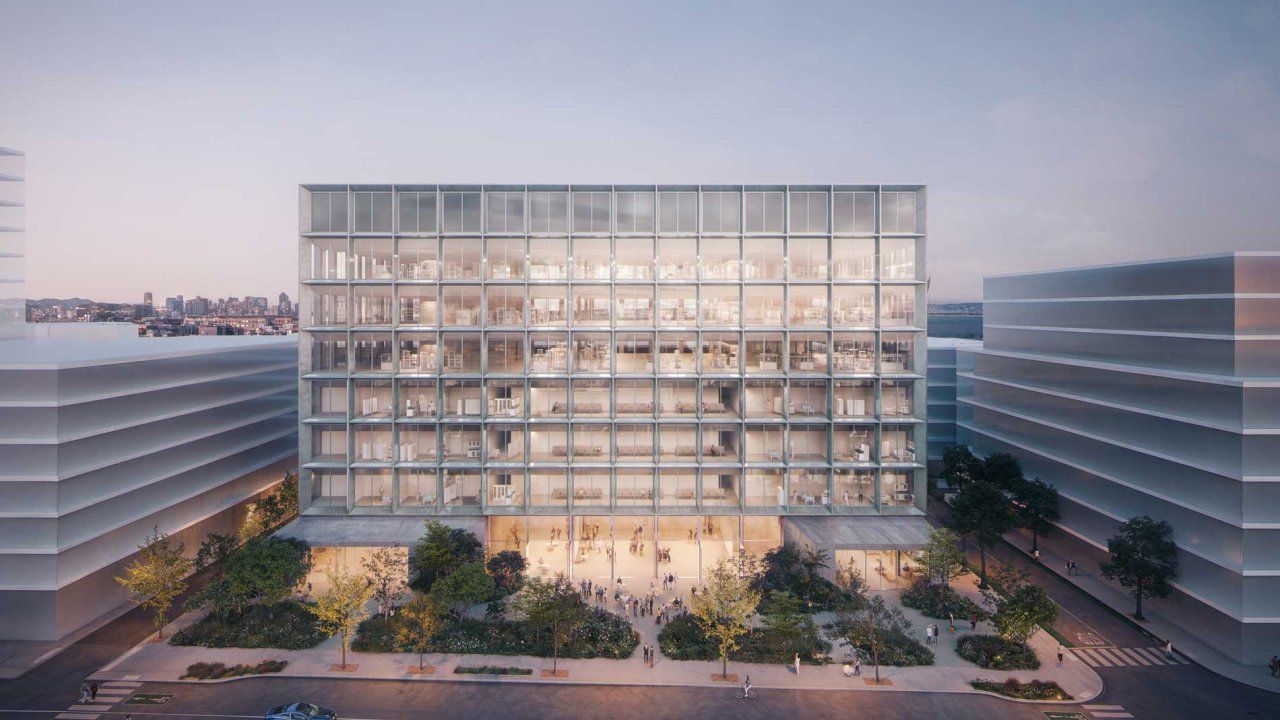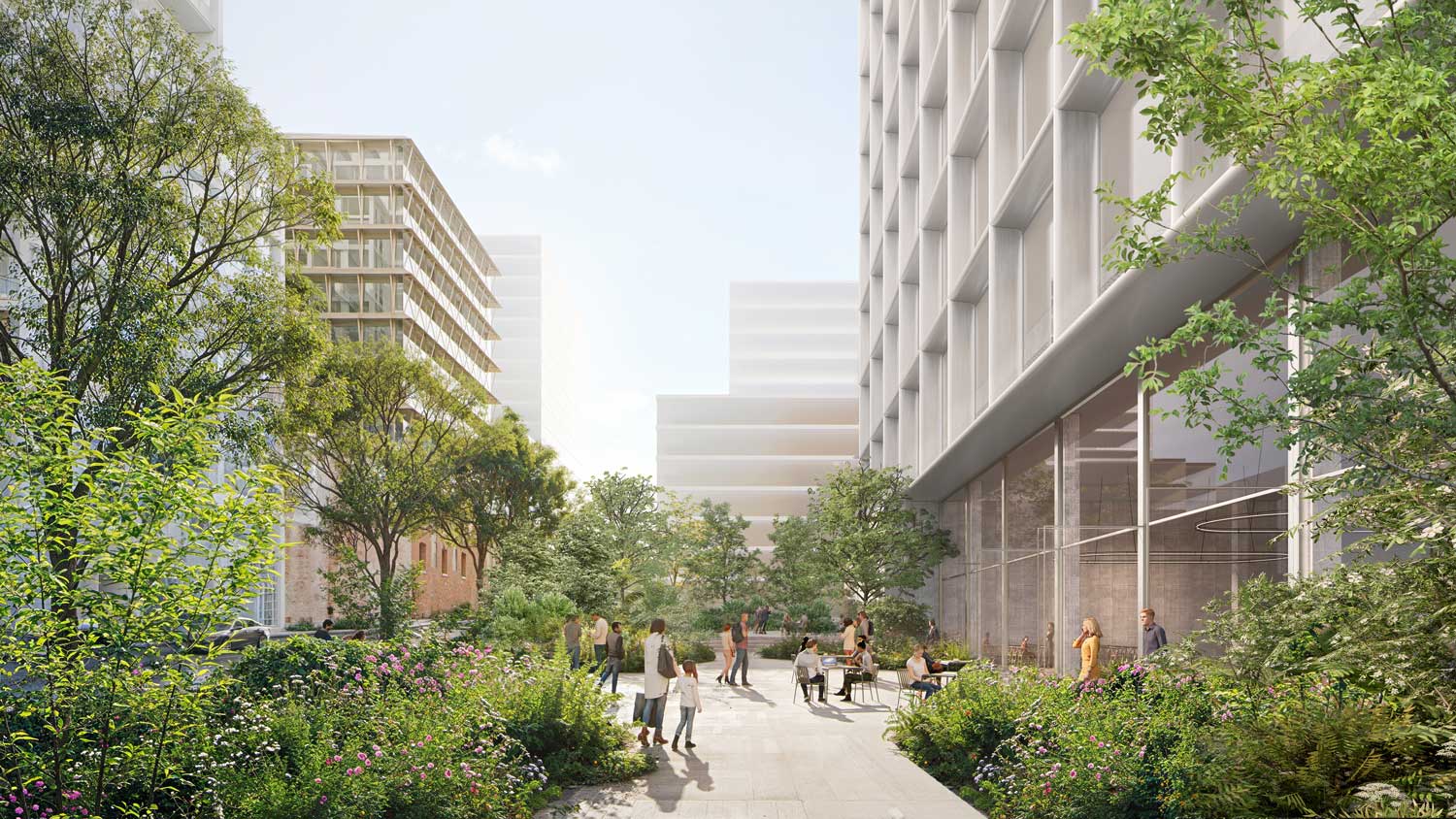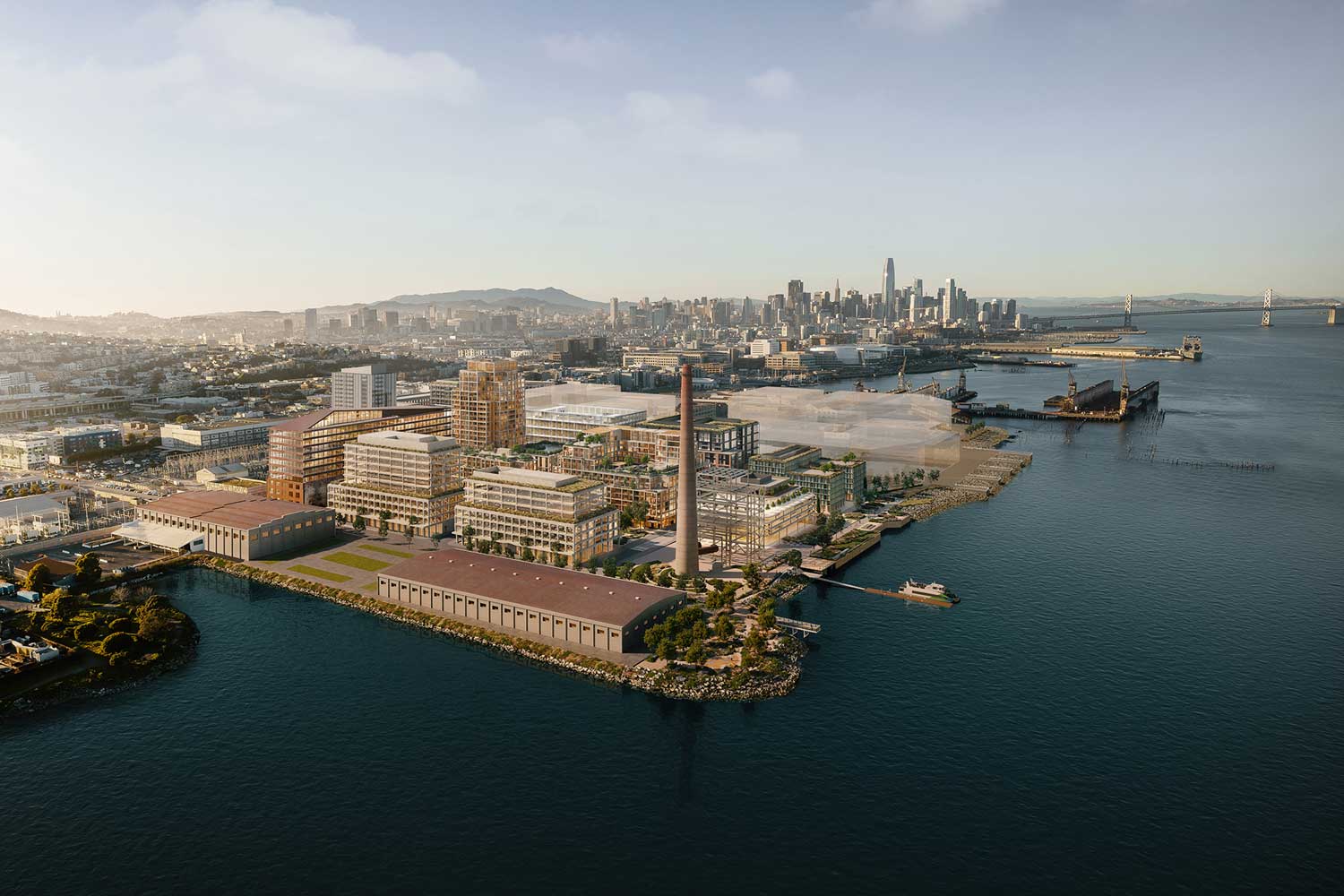
The UC Board of Regents has approved a state-of-the-art UCSF cancer treatment center, as well as UCSF research space, a life sciences incubator, and primary and specialty care clinics as part of the Dogpatch Power Station development in southeast San Francisco.
A public-private partnership, the UCSF Clinical and Life Sciences Building will be located four blocks south of UCSF's Mission Bay Campus site and will serve as an anchor tenant in the Power Station project, bringing jobs and access to UCSF Health clinical care in a growing area of the city.
Central to the building's benefits is a center for proton beam therapy, a highly precise treatment that is currently available only in Southern California and Seattle on the West Coast. When it opens in 2029, the proton therapy center will serve patients throughout Northern California. The building will also host a life sciences incubator for scientific startup companies that benefit from proximity to UCSF's research campus nearby.
"This is an exciting project that will bring together renowned patient care and biomedical research, as well as graduate-level training and new biomedical companies to serve the region for years to come," said UCSF Chancellor Sam Hawgood, MBBS. "It will also provide good jobs in the Dogpatch area, contributing to the economic vitality of this area of the city. We are pleased that the UC Regents saw the value in this project and its importance to San Francisco."
Expanded access to world-class clinical care
Designed by architects Herzog & de Meuron in partnership with Stantec, the 130-foot building will have eight floors above ground and two levels below, which will house the proton therapy center. Primary care and multi-specialty clinics will occupy floors two through five.
Opening in 2028, the clinical space will allow UCSF Health to serve a growing number of patients currently unable to access its services in both primary care and in the specialty-care programs for which UCSF Health is ranked among the best in the nation.

"UCSF Health is driven by an unwavering commitment to improving access to care and ensuring every person in our community can receive the care they need when they need it, whether it's a routine check-up or life-saving cancer care," said Suresh Gunasekaran, president and chief executive officer of UCSF Health. "This new facility will help us deliver on that promise for San Francisco's southeastern corner, while establishing a new West Coast hub for the leading-edge, bench-to-bedside care that we are known for."
The proton therapy center will add a powerful tool to UCSF Health's cancer program, offering highly precise, concentrated doses of radiation that directly target cancer cells while limiting damage to surrounding tissues. The precision enables oncologists to treat some of the most challenging cancers, including cancers of the brain, eye, lung, prostate and spine. It will also serve as a center of excellence, working to advance the technology through further research.
"Our vision to bring proton therapy to cancer patients at UCSF has taken years to reach realization," said Catherine Park, MD, chair of UCSF Radiation Oncology, who has been working on the project since 2015. "Access to state-of-the-art proton therapy will allow us to advance the possibility of cure and reduce side effects."
The building will also include an endoscopy suite, infusion center, and a pharmacy to support the medication needs of the cancer program and clinics throughout the facility.
Fostering bioscience innovation, designed with community input
The UCSF Clinical and Life Sciences Building is designed to benefit both the community and its environment. Aiming for LEED™ Gold certification, it will feature a ground-level façade of storefront glass and concrete or stucco walls, with upper floors featuring glass panels for daylight and energy efficiency. It will be fully accessible by public transit.
Its top floors will house a life sciences business incubator that will serve as an extension of UCSF's programs in innovation and entrepreneurship. The incubator will create new opportunities for faculty and graduate and professional students, while fostering growth in California's life sciences and biotechnology industries.

The Power Station project's lead developer, Associate Capital, has kept the community at the center of its revitalization plans, convening hundreds of tours and community meetings, and drawing support from both the Dogpatch and Potrero Neighborhood Associations. Through five years of regulatory approvals, the plan has been unanimously approved by the San Francisco Board of Supervisors, the Planning Commission, Port Commission, and other agencies.
"For decades, the community rallied to close this power plant and improve health in the surrounding neighborhoods. We built on that momentum to create a better place here on this stretch of the waterfront, with community at the heart of everything we've done," said Enrique Landa, Associate Capital managing partner. "Now we have an opportunity to partner with UCSF and bring its world-class health care and research to this very same community. We can't think of a more dramatic revitalization for San Francisco's southeastern neighborhoods."
In addition to the Sept. 19 design approval, the Regents approved adoption of the building's California Environmental Quality Act findings and an amendment to UCSF's 2014 Long Range Development Plan. UCSF plans to return to the Regents later this fall for final budget approval of the project.
Separately, the Regents approved a $125.89 million revitalization project on UCSF's Parnassus Heights Campus. The Parnassus Central Campus Site Improvements (PCCSI) project is part of the overall vision of revitalizing UCSF's historic campus, providing a pedestrian promenade, utility infrastructure, and other improvements required for the Barbara and Gerson Bakar Research and Academic Building, which will formally break ground later this month.






